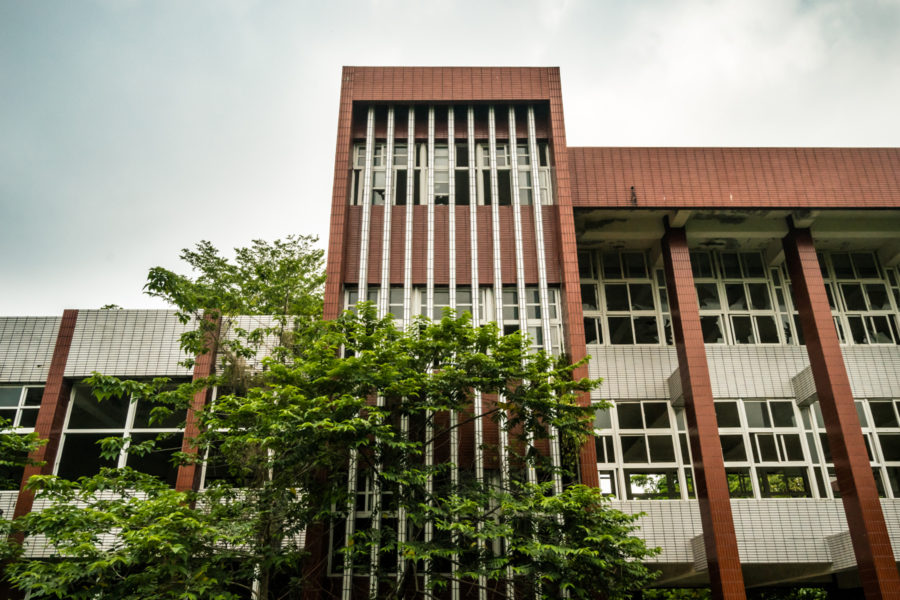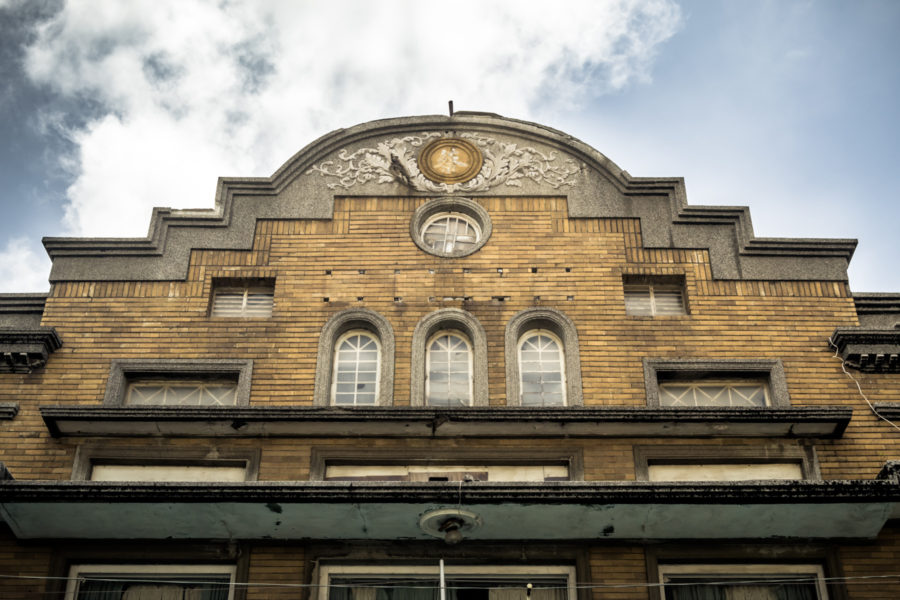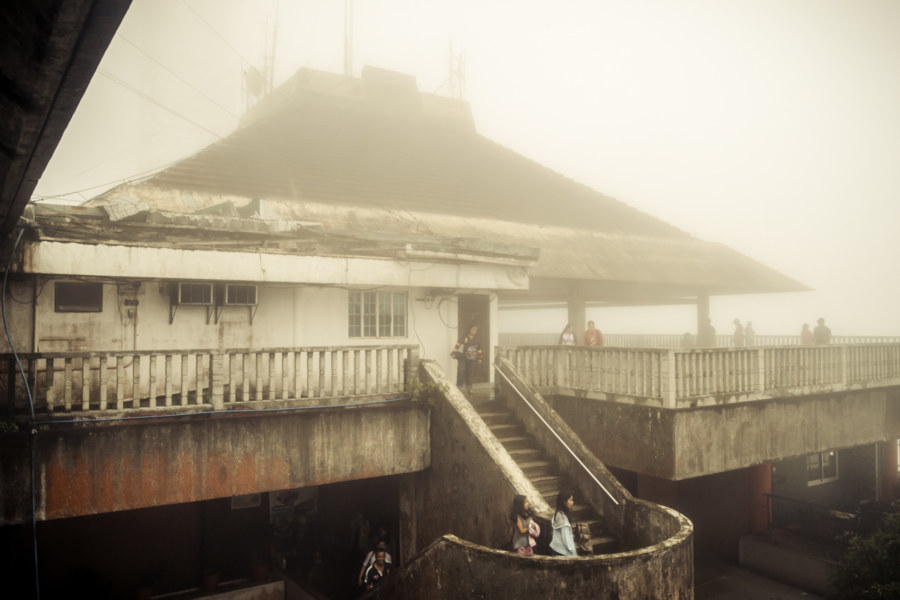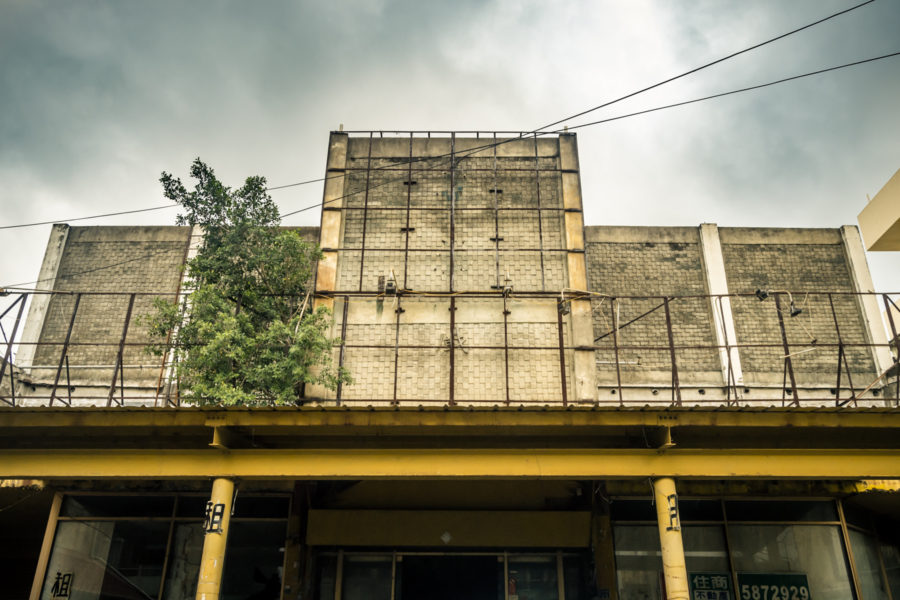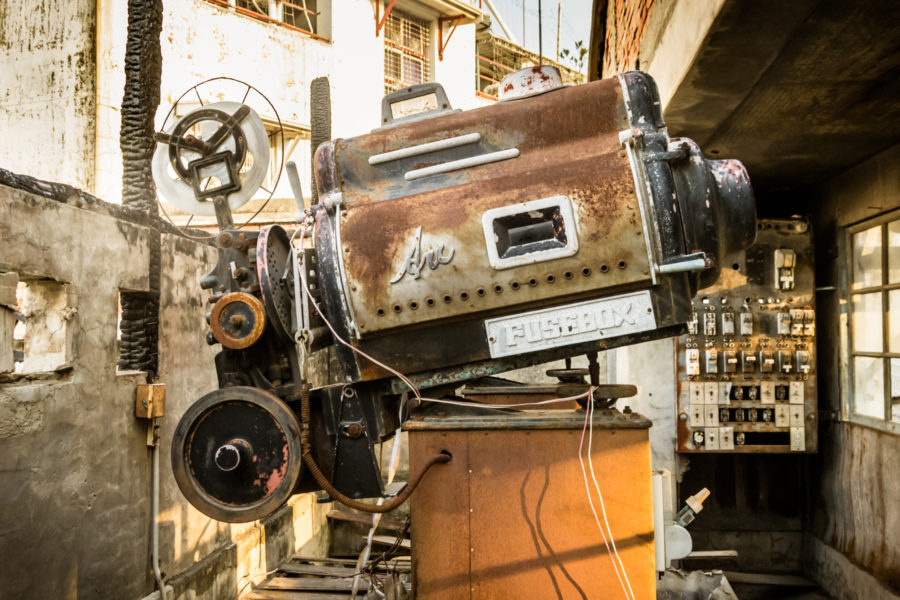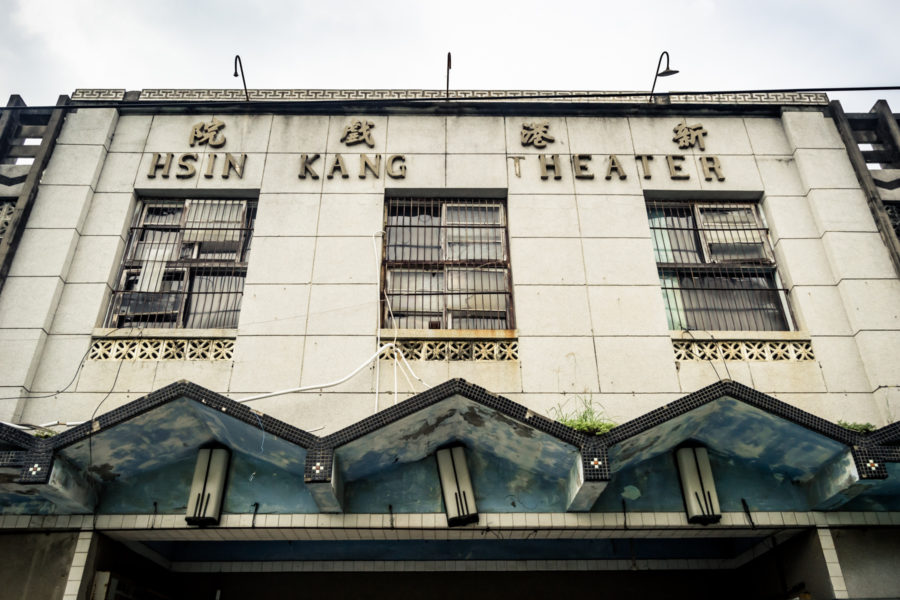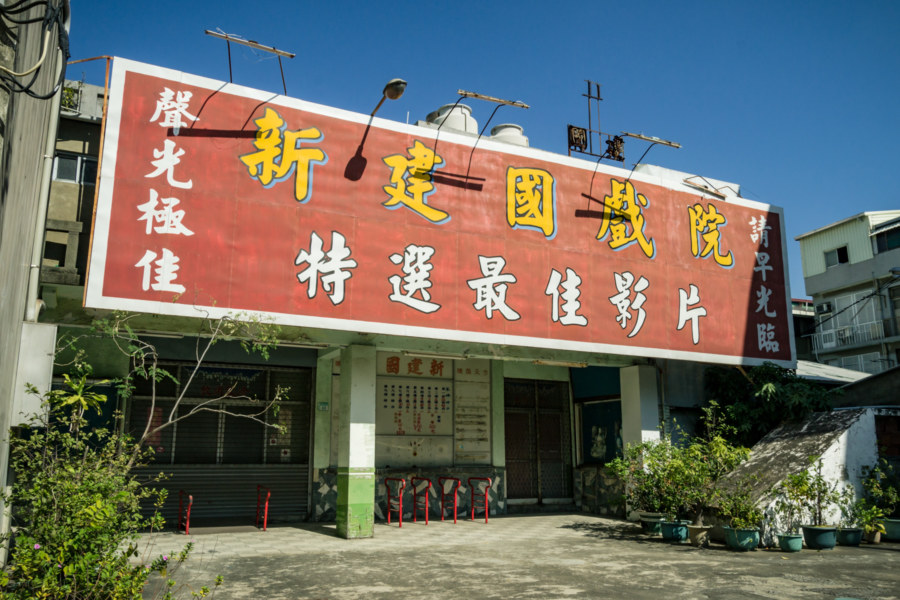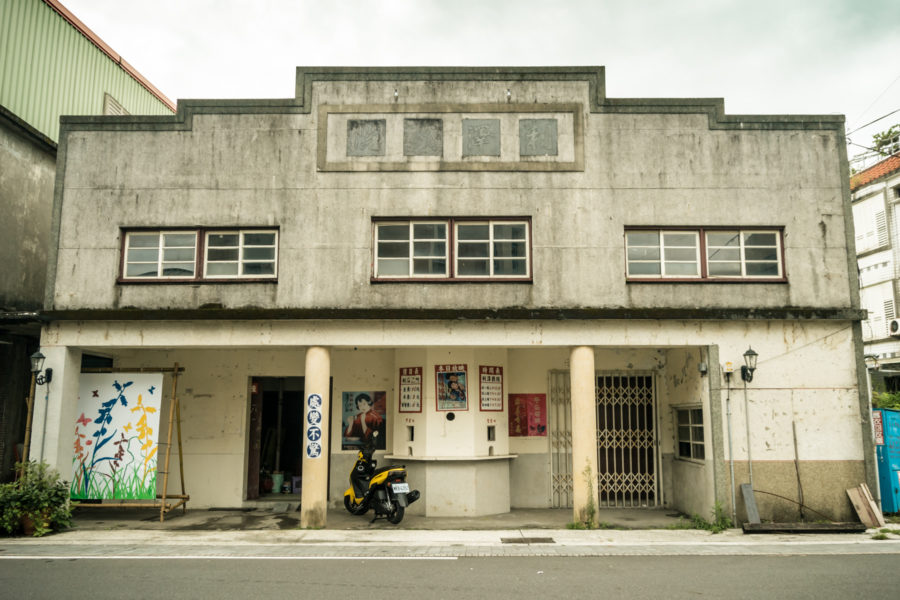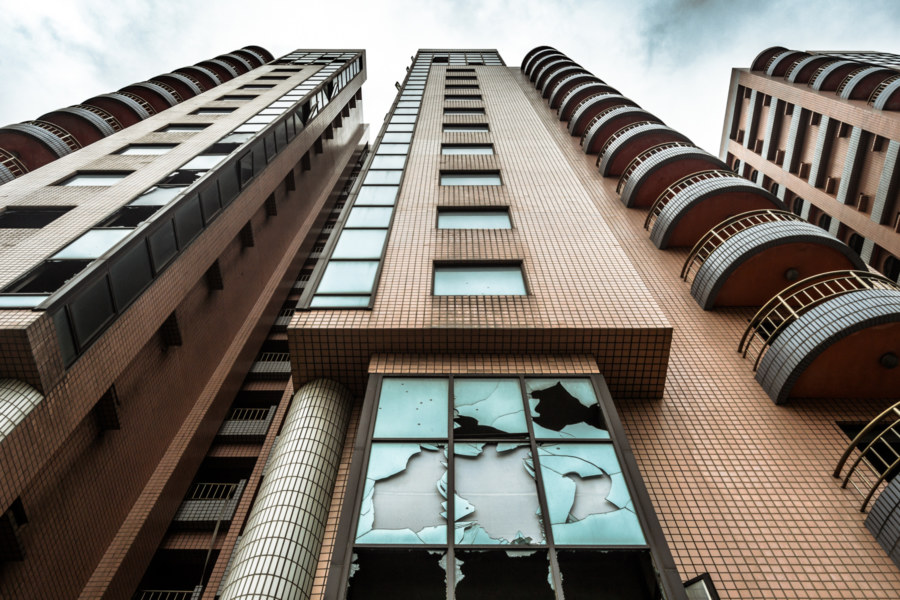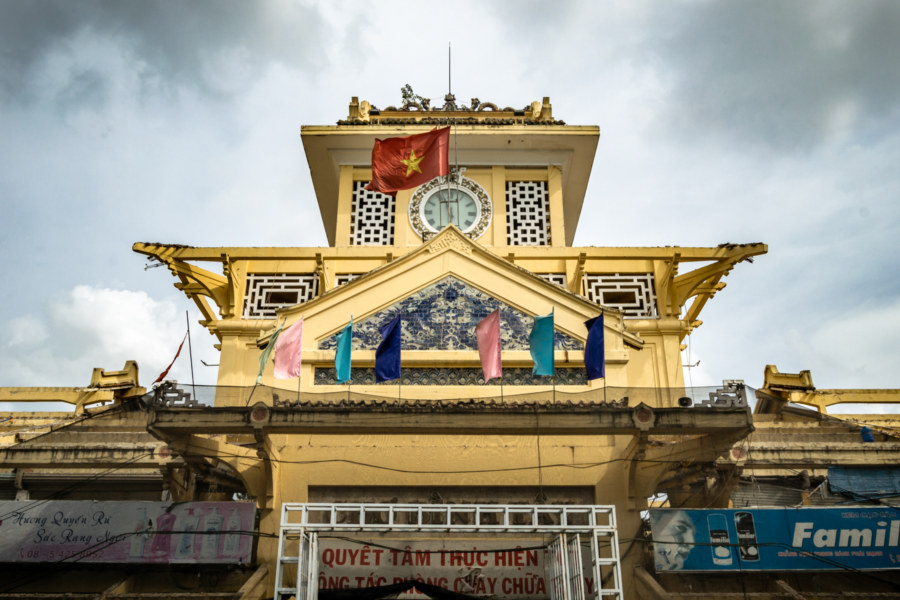Yìxīn Vocational High School (益新工商職業學校) is a relatively obscure but not entirely unknown ruin in central Taiwan. Located along the main road running through Linnei, Yunlin, it seems to have been abandoned in the aftermath of the devastating 921 Earthquake, nearly two decades ago. Many schools were destroyed in the quake and scores more were condemned (most famously an entire university campus in Dongshi) but whether this particular school suffered the same fate isn’t certain.

Structures fit for habitation and use. See also: urbanism, commercial, industrial, residential.
Subterms
Adjacent Terms
Beigang Theater 北港劇場
Beigang Theater (北港劇場) in Beigang, Yunlin, is among the finest and most well-preserved of Taiwan’s remaining Japanese colonial era theaters. Built in 1937 with investment from a local businessman by the name of Tsai Yu-Hu (蔡裕斛), this three storey theater featured a revolving stage, seating for 800 guests, and simple western-style facade with a trace of the Baroque Revival architecture popular at the time. It was not only a cinema—Taiwanese opera, glove puppet shows, musical concerts, wedding banquets, and other events were also held inside. The theater went out of business in 1988 and was converted for use as a department store and restaurant for some time thereafter. Nowadays it is apparently still in use as a pool hall and, inexplicably, a kidney dialysis center, but I saw no evidence of this when I visited in the summer of 2017.
People’s Park in the Sky
People’s Park In The Sky is a peculiar attraction located about 60 kilometers south of Manila in Tagaytay, a popular leisure destination in the province of Cavite in the Philippines. Perched on top of Mount Sungay at an elevation of 709 meters, the highest point on the northern rim of the immense Taal Caldera, it was originally planned to be a palace suitable for state visits during the kleptocratic reign of Ferdinand Marcos. Construction began in 1979 with a drastic leveling of the mountaintop, which previously reached 759 meters, but ground to a halt with increasing civic unrest and the cancellation of Ronald Reagan’s state visit in 1983. Following the People Power Revolution of 1986 the unfinished mansion was transformed into a public park and monument to the greed, corruption, and excess of the Marcos era.
Xiluo Huasheng Theater 西螺華聲戲院
Xiluo is justifiably famous for Xiluo Theater, the Japanese colonial era theater located close to the architectural wonders of Yánpíng Old Street 延平老街, but this small town on the south bank of the sluggish Zhuóshuǐ River 濁水溪 was once home to two additional theaters. Almost no mention of these other theaters can be found except in this news report about a local painter—but while browsing around satellite view on Google Maps I managed to locate Huáshēng Theater 華聲戲院 (also known as Yīshēng Theater 一生戲院).
Xinying Chenggong Theater 新營成功戲院
Despite its relative obscurity Xinying is the largest settlement along the railway line between metropolitan Tainan City and Chiayi City. It was the capital of Tainan County prior to amalgamation in 2010 and remains the secondary administrative seat of Tainan. Located on the broad and fertile Chianan Plain, it was also an important transportation hub for the sugar industry, and what remains of the Japanese colonial era sugar factory can still be found on the south side of town. Xinying was also home to half a dozen standalone movie theaters in its heyday, but most have since been demolished. I was fortunate to visit the ruined KMT authoritarian era cinema Chénggōng Theater (成功戲院) in 2017, not long before it was completely destroyed.
Hsin Kang Theater 新港戲院
Hsin Kang Theater 新港戲院 is located in the small town of Xingang, Chiayi, not far from the famous Fèngtiān Temple 奉天宮. Multiple sources agree it went out of business in 1988—a victim of shifting consumer preferences and demographic changes in small town Taiwan—but the actual age of the building is somewhat uncertain. This academic reference suggests it was founded in 1929, in the midst of the Japanese colonial era, but the theater was almost certainly renovated or completely rebuilt in the post-war period.
Tainan Xinjianguo Theater 台南新建國戲院
One of the last of the many vintage theaters of Tainan seems to have finally closed its doors. Founded in 1964, the notorious Xīnjiànguó Theater 新建國戲院 was originally named for its location on Jianguo Road 建國路, which was later renamed Mínquán Road 民權路. It is not uncommon for old theaters in Taiwan to resort to showing pornography in the twilight of their decline but this particular theater appears to have specialized in more carnal forms of entertainment for much of its history. Perhaps this is why this theater remained in business until very recently—long after most of the nation’s hundreds of other standalone theaters shut down in the late 1990s and early 2000s.
Lize Theater 利澤戲院
The obscure Lìzé Theater 利澤戲院 is located in the village of Lìzéjiǎn 利澤簡 in Wujie, a rural township just east of Luodong in Yilan, Taiwan. Built in 1964, it once served as a cinema and playhouse, hosting a variety of films and live theater performances for the local populace before slipping into decline in the 1980s, a little earlier than most other theaters I’ve visited around the nation. Afterwards the theater was converted for use as a clothing factory but this also went out of business. Nowadays the building is more disused than abandoned, as descendants of the original owner are still making use of the structure for storage and other purposes. In a stroke of good luck I happened to visit while the door was open—and after communicating my interest in the history of old theaters in Taiwan I was invited in for a brief chat and look around. Each theater has its own story to tell—but in this case I was particularly interested in learning why a theater was built in such a small and seemingly unimportant village.
Wanshou Road Residential Ruins 萬壽路廢棄社區
Taiwan is riddled with failed construction projects, monuments to avarice, incompetence, and bureaucracy. Building defects, mismanagement, and land ownership disputes are common causes, but legal battles, limited funding for costly demolitions, and a lack of political often ensure such projects remain a blight on the urban landscape of the nation. One such project can be found along Wànshòu Road 萬壽路 at the western margins of the Taipei Basin 台北盆地 not far from Huilong Station 迴龍站, terminus of the orange line of the Taipei MRT in Xinzhuang, New Taipei. Technically this abandonment is located within Guishan, for the district boundary sweeps down from the hills and loops around a mostly industrial area sprawling along a small valley leading the rest of the way to the flatlands of the basin. Given that this road is one of the main arteries connecting Taoyuan with Taipei these twin 17-storey towers, typically identified as the Wanshou Road Residential Ruins 萬壽路廢棄社區, are regularly the subject of inquiries on PTT and other parts of the Taiwanese internet.
Binh Tay Market
This week I am visiting Ho Chi Minh City, Vietnam, on another side trip from Taiwan. Six months ago I visited Hanoi and enjoyed my time there—check out this photo gallery for a comprehensive overview—so I’m hoping to repeat the experience in the emerging megacity further south.
My first walkabout brought me to District 5 in search of Cholon, HCMC’s historic Chinatown, which was originally a settlement separate from colonial Saigon. Cholon literally means “Big Market” so I made a point of visiting Binh Tay Market (Vietnamese: Chợ Bình Tây), which is just over the border in District 6. Along the way I noticed many temporary structures along the roadway so it was no great surprise to discover the famous market closed for what I would assume is renovation.
